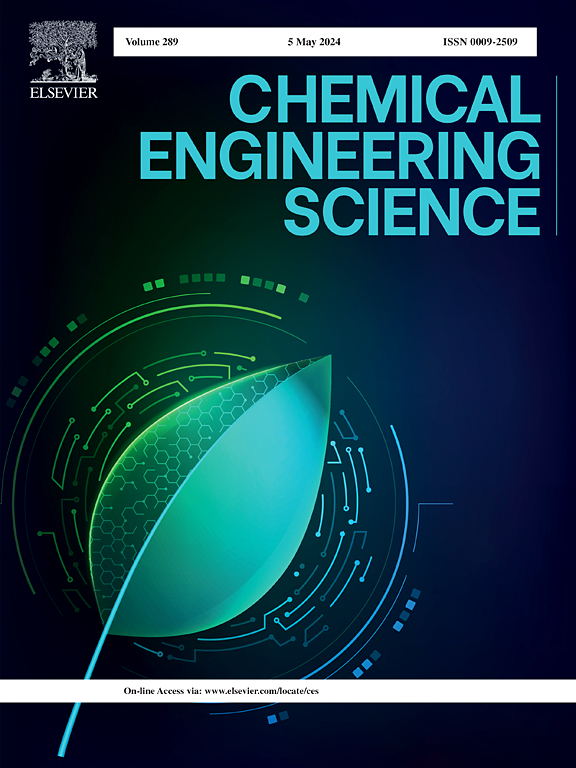Computational models for the prediction of yields in the autothermal pyrolysis of biomass
IF 4.1
2区 工程技术
Q2 ENGINEERING, CHEMICAL
引用次数: 0
Abstract
Autothermal pyrolysis of biomass, conducted in fluidized bed reactors, addresses the heat transfer challenges of conventional fast pyrolysis by injecting a small amount of oxygen to allow for partial oxidation of pyrolysis products. This article presents two computational models for predicting yields in autothermal pyrolysis using a comprehensive chemical kinetic mechanism for devolatilization, char combustion, and secondary gas-phase reactions. Initially, the reaction mechanism is studied in stages using a homogeneous model in OpenFOAM®, excluding the fluidized bed hydrodynamics. The model performs well to estimate yields based on biomass feedstock and operating conditions. An Euler-Euler multiphase model is then used to describe the fluidized bed hydrodynamics coupled with the kinetic model. Early-stage simulations are compared to experimental data, showing that secondary gas-phase reactions can be omitted in lab-scale devices. However, homogenous models show that such reactions are useful when considering longer residence times typical of plant-scale devices.
求助全文
约1分钟内获得全文
求助全文
来源期刊

Chemical Engineering Science
工程技术-工程:化工
CiteScore
7.50
自引率
8.50%
发文量
1025
审稿时长
50 days
期刊介绍:
Chemical engineering enables the transformation of natural resources and energy into useful products for society. It draws on and applies natural sciences, mathematics and economics, and has developed fundamental engineering science that underpins the discipline.
Chemical Engineering Science (CES) has been publishing papers on the fundamentals of chemical engineering since 1951. CES is the platform where the most significant advances in the discipline have ever since been published. Chemical Engineering Science has accompanied and sustained chemical engineering through its development into the vibrant and broad scientific discipline it is today.
 求助内容:
求助内容: 应助结果提醒方式:
应助结果提醒方式:


